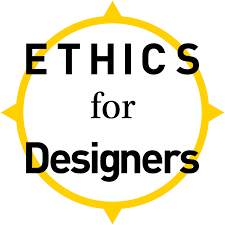We live in a world where graphic designers have a profound impact on our daily lives, and their requirements are highly valued to boost the growth market. From logos to advertisements, graphic designers will play a key role in designing poster templates that attract audiences and make them act.
However, in this rapidly evolving world, it is necessary for graphic designers to discover the different ethical dimensions of graphic design, concentrating on responsibility and sustainability.
In this article, we will explore the fascinating realm of design ethics and unleash how graphic designers can make a positive impact.
Ethical Responsibilities of a Graphic Designer
As a graphic designer, you have to be creative and visually appealing. Ensure that you follow design guidelines and ethical rules of design creation so that your work aligns with societal values.
Here are some of the ethical responsibilities that you should bear in mind:
1. Accuracy and honesty: As a graphic designer, provide the information truthfully and correctly. You must genuinely present your design to avoid mispresenting the facts or using fraudulent tactics. Maintain honesty in your work so that the information, visuals, and messages you have created are reliable and genuine.
2. Respect for diversity and inclusivity: As a graphic designer, you can shape the assessments and influence cultural narratives. It is necessary to be thoughtful of a broader audience for greater reach. Respect cultural tinges, avoid spreading stereotypes, and try to create inclusive visuals that reach a wide range of people.
3. Avoiding harm: Ethical design means which will consciously be avoiding designs that cause harm or affect negative stereotypes. You should know the potential impact your visuals may have on individuals and communities. Take the necessary steps so that your designs will not contribute to discrimination, demotion, or offensive content.
4. Environmental considerations: Sustainability is an aspect of ethical design. Make conscious choices to reduce your environmental footprint throughout the design process. You must use eco-friendly materials, reduce waste, and discover digital alternatives when feasible. Through the integration of sustainable practices into your work cultures, you help create a more sustainable future.
5. Client collaboration: As a graphic designer, you cooperate with clients to bring their visions to life. It is a must to connect and understand their values and objectives. If you encounter an appeal that raises ethical concerns, have open discussions with your customers, and proposition alternative solutions that support ethical principles.
Graphic Design’s Role in Sustainability
Let’s look at how graphic design and sustainability are related. What role does graphic design play in promoting social and environmental sustainability? So graphic designers may reduce their ecological footprint and support sustainable practices by making thoughtful design decisions.
They may make a significant contribution to a better future by using energy-efficient techniques and eco-friendly materials. Design professionals who incorporate sustainability into their work act as change agents.
So keep in mind your enormous potential as a graphic designer the next time you start a design project. Examine sustainable design methods, think about the ethical implications of your work, and use your creativity as a catalyst for progress. Together, we can bring about a world where design is not only aesthetically pleasing but also sustainable and ethical.
Join the movement toward responsible and sustainable design today!
